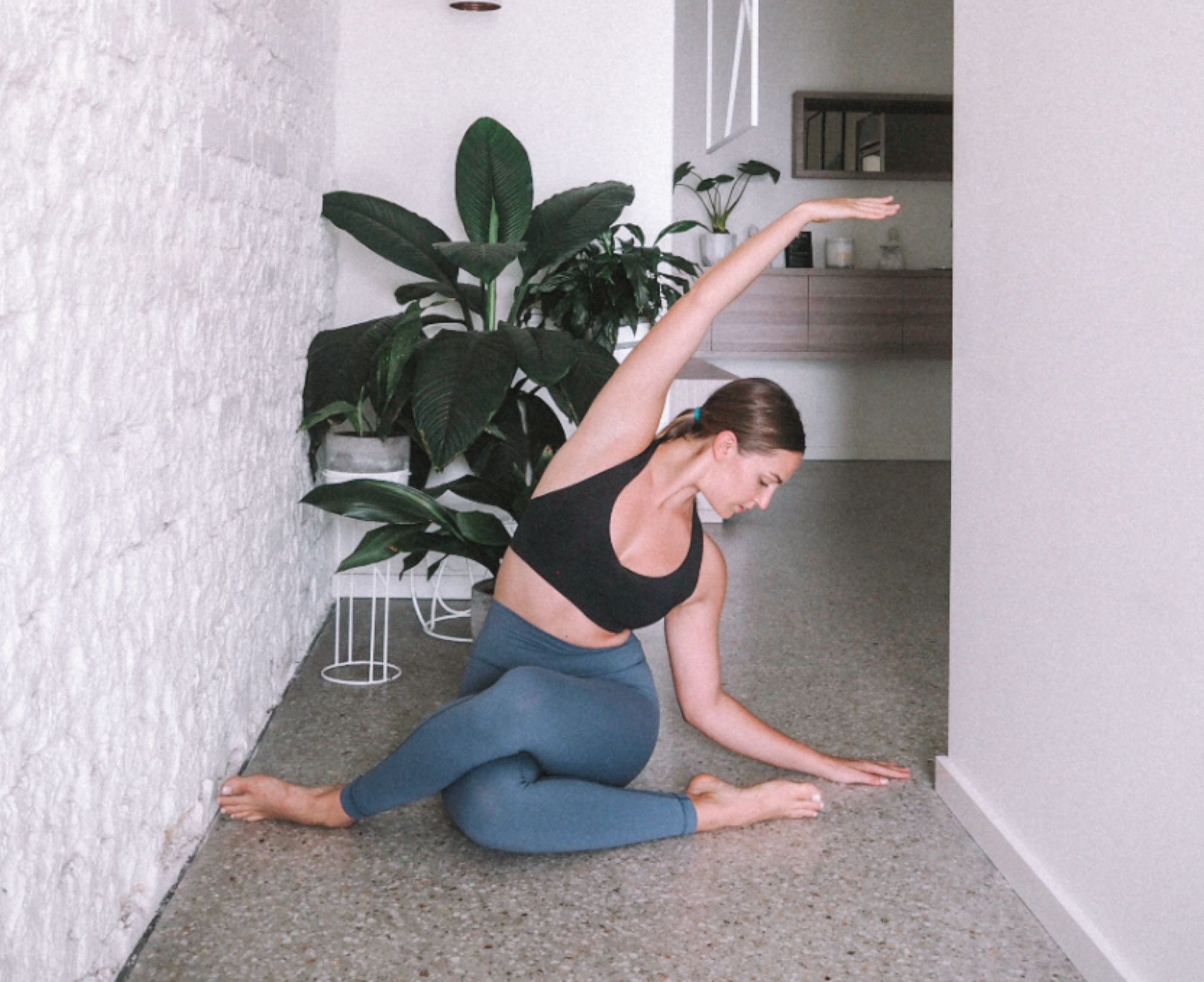Prehab Routine
Want to bulletproof your body and safeguard against injury? Then you better be getting into Prehab - the mode, movement and mindset that is set to shift how you focus on fitness this year.
What Is '“Prehab”?
Pre-Hab: Preventative Rehabilitation
Prehab is the proactive approach to avoiding injury by combatting muscular imbalances, improper movement patterns and ingrained poor habits. Through a series of exercises focusing on activation, engagement and correct muscle recruitment the strength and stability around vulnerable areas is enhanced to improve mobility, balance and joint function. In time, this decreases the potential for injury.
The Prehab Protocol
Undertaking a prehab protocol simply means dedicating some time to assess your postural alignment, examine movement patterns and analyse weaknesses to minimise the risk of injury.
Generally, it is designed to give a little extra TLC and focus to the common injury prone areas of the body such as the hips, knees, shoulders and ankles whilst enhancing core function. This true, core strength can help alleviate muscular imbalances and postural deviations that increase risk of injury when load is applied to movement – such as commencing a weight training regime, or simply picking up a heavy box off the ground in your office. Once the joint and postural integrity is gained, or restored, then optimal movement patterns and functions are able to be performed to greater effect and outcome – making prehab an integral addition in order to assist your progression as an athlete!
The How To
The most effective way of incorporating prehab into your regime is to include specific prehab exercises into a dynamic warmup to be completed before you commence your workout. This allows the muscles targeted in the prehab exercises to be specifically engaged and activated, which in turns means you will be able to recruit the correct muscle fibres in the main “work” section of your session – ensuring optimal movement pathways and patterning!
The Bonus Points
Taking a holistic approach, this method of preventative rehabilitation can also include all aspects of your life that affect your training and/or optimal functioning. This can include your nutrition, sleep, hydration and mindset. Ensuring you are taking genuine care of yourself in each of these areas greatly decreases your risk of injury and ensures you can operate at full capacity!
Take It To The Pros
Whilst there are many prehab exercises that are great for everybody, due to our highly individual natures, injury predisposition, postural alignment and lifestyle factors that impede on function, it can be highly beneficial to book in with a pro, such as a physiotherapist, exercise physiologist or clinical Pilates practitioner, so that you can have an individual analysis. This will then allow you to have a tailored programme specifically devised for your own body.
The Exercises
Aim to include these Prehab Series Exercises into your dynamic warm up prior to training at least 2-3x per week. Each exercise should be repeated for a minimum of 8-12 repetitions on each side.
The Prehab Series Exercises
Swimming Prep/Bird Dog
Depending on your movement background you may know this exercise as swimming prep (Pilates) or Bird Dog (exercise science), either way, this is a fundamental exercise that should be included in all prehab series'.
Key Focus: Maintaining postural alignment of a neutral spine, deep core activation and co-ordination. Challenging balance, engagement and endurance, your focus should remain on reducing the range of movement until strength has been solidified in the torso and slowly adding on greater extension of the opposing arm and leg.
Dead bugs
Key Focus: Maintaining core engagement with the added load of moving levers (single arm and leg moving in opposition). Hone in on maintaining rib and pelvic placement to ensure spine position doesn't change – ie. the lower back arching.
Single leg lower + lift with band
Key Focus: Correct recruitment of the muscles of the hip and leg: activating the hamstring with the push down and releasing the hip flexor on the return. Maintaining pelvic placement while the long lever of the leg is moving.
Prone Y to T
progression: add thoracic extension hold
Key Focus: Strengthening thoracic extension and maintaining scapula stabilisation within movement. Engaging correct recruitment of the muscles surrounding the shoulder girdle and counteracting common flexion-related postural issues of the area.
Mini band lateral walks
Key Focus: Activating Gluteus Medius and strengthening the lateral chain of the lower limb to ensure correct alignment for the tracking of the hip, knee and ankle.
Single leg squat
Key Focus: Developing dynamic stability in a unilateral movement to support correct biomechanics and tracking of the joints.
Rotator cuff rotations
Key Focus: Strengthening the vulnerable joint of the shoulder girdle and finding scapula stabilisation by recruiting the intrinsic muscles of the rotator cuff.

